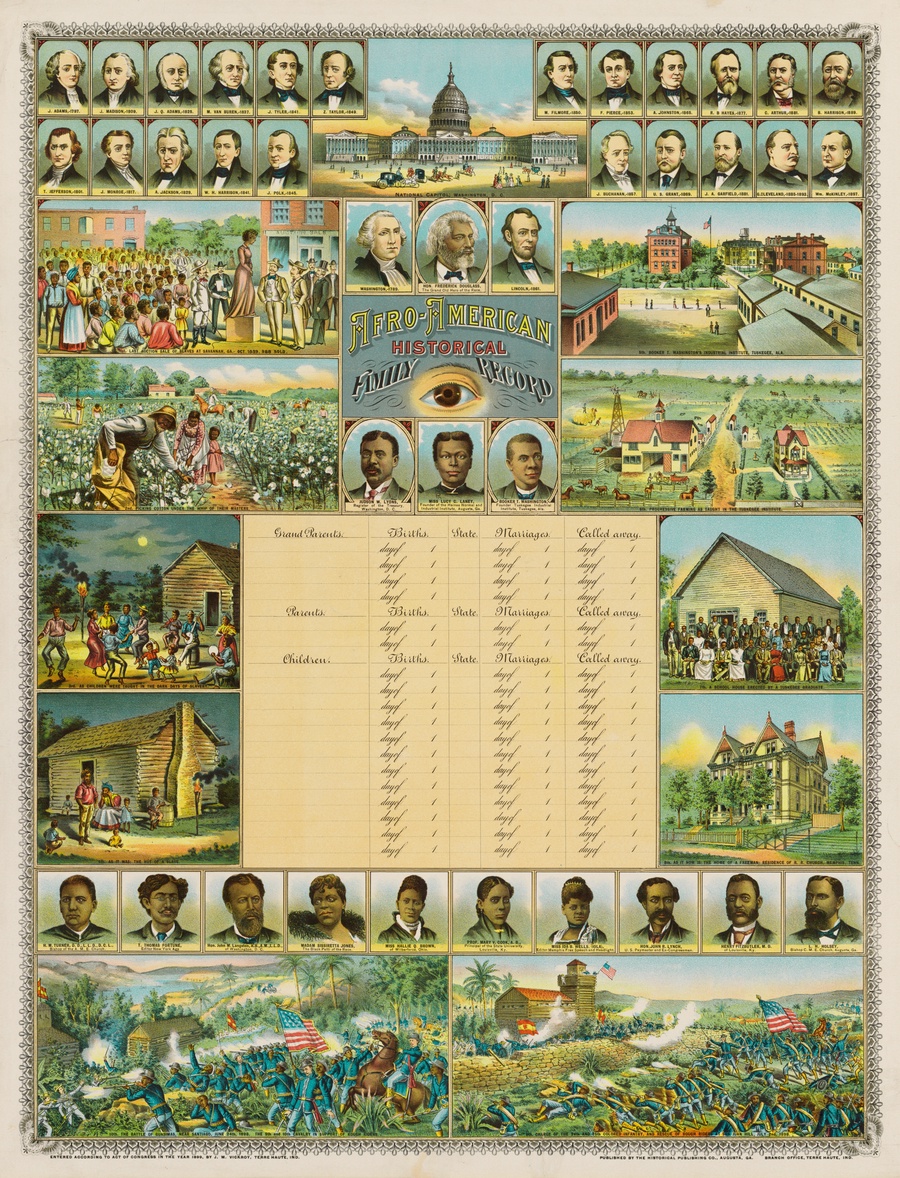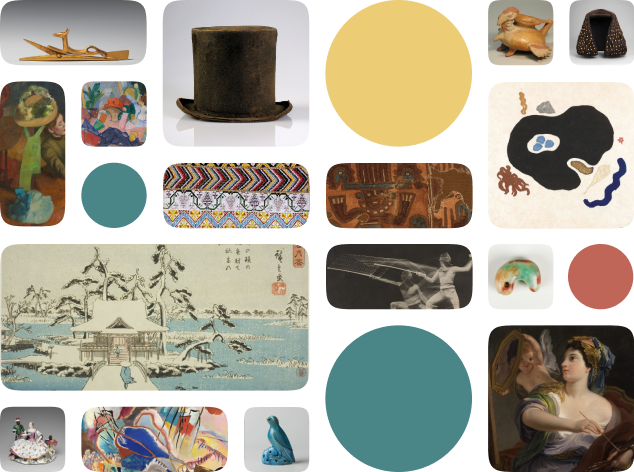About the work
Recording one's family history became popular after the American Civil War. Claiming national identity this way proved easier for white Americans than for African Americans. The first slave ship arrived in Jamestown, Virginia in 1619 and many descendants went undocumented for over 200 years. This poster was a very visible means for African Americans of the late-nineteenth century to begin to claim U.S. nationality. It's narrative vignettes were common in similar genealogical documents of the time. Although these scenes feature a positive outlook on the crowning achievements of African Americans in United States history, they do not present the barbarous history and harsh realities of life before and after the Civil War.
Work Cited
Armandroff, Olivia. “A Familiar Landscape: A Surrogate for Ancestry and Genealogical Legacy?” Material Matters, 11 July 2020, https://sites.udel.edu/materialmatters/2020/06/29/a-familiar-landscape-a-surrogate-for-ancestry-and-genealogical-legacy/. Accessed 28 Aug. 2022.
Work Cited
Armandroff, Olivia. “A Familiar Landscape: A Surrogate for Ancestry and Genealogical Legacy?” Material Matters, 11 July 2020, https://sites.udel.edu/materialmatters/2020/06/29/a-familiar-landscape-a-surrogate-for-ancestry-and-genealogical-legacy/. Accessed 28 Aug. 2022.
National Portrait Gallery Object Description
The Afro-American Historical Family Record is both a personal genealogical chart and a proud pictorial history of African American advancement. Beneath symbols of national government, vignettes of an antebellum slave auction, cotton picking, and poor schools and housing on the left are contrasted with postwar scenes of free communities, industrial jobs, and prosperous schools and homes on the right. The two scenes at the bottom depict black regiments serving in Cuba during the Spanish American War. But portraiture of specific individuals plays an important role as well. Frederick Douglass, Booker T. Washington, educator Lucy C. Laney, and lawyer Judson Lyons are grouped with PresidentsWashington and Lincoln. Beneath the space designed for recording personal family records are ten more prominent educators, ...
Work details
"--" = no data available
All Works in Curationist’s archives can be reproduced and used freely. How to attribute this Work:
.

